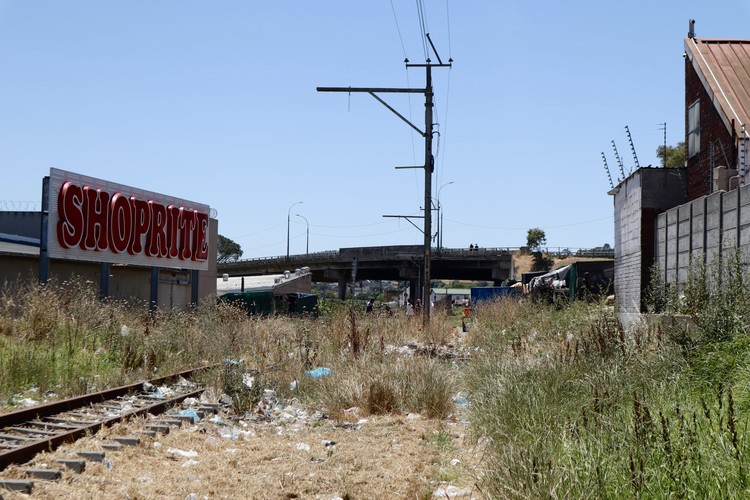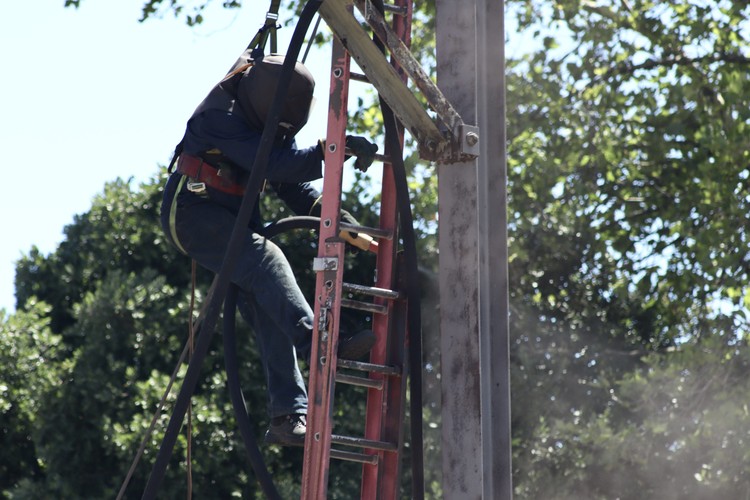Trains to return to Stellenbosch by year end, says Metrorail
Residents struggling to pay for alternative transport look forward to the return of rail services
The rail tracks just after the Du Toit Station in Stellenbosch are yet to be cleared of bush and other debris, but Metrorail says this and other lines in Stellenbosch will be up and running by the end of 2023. Photos: Joseph Bracken
- Train stations in Stellenbosch could be operating again before the end of 2023, says Metrorail.
- Rail services in and out of Stellenbosch have been closed since March 2020.
- Work is currently underway to get the train stations operational again. It includes repairs to the overhead traction equipment, rail tracks, substations and station facilities.
- Residents have welcomed the news, as many have been struggling to foot the bill for alternative transport.
More than three years after their closure, train stations in Stellenbosch are expected to reopen by the end of this year, welcoming back thousands of commuters, says Metrorail Western Cape spokesperson Zinobulali Mihi.
The three main stations under the Stellenbosch Municipality – Du Toit, Stellenbosch, and Koelenhof Stations – along with halts in Vlottenburg and Lynedoch, have been closed since the beginning of the Covid lockdown in March 2020.
Before the closure, these stations saw a combined average of more than 22,000 commuters monthly.
In July, Mihi told GroundUp that contracts for the Strand and Muldersvlei (Stellenbosch) line had been awarded “to recover the electrification network”, and that work was underway to get those lines operational again.
“Efforts are being made through various projects to recover and refurbish the lines,” Mihi told GroundUp. However, there have been several delays to reopening rail services in Stellenbosch due to “major vandalism” to the tracks and infrastructure at the stations.
The vandalism was extensive and included damage to overhead traction equipment, rail tracks, substations, and station facilities.
But long before the Covid lockdown, Metrorail’s service was crumbling across the country. GroundUp had been documenting the rail agency’s steady demise over the past decade.
Commuters pay the price
The absence of working trains in and out of Stellenbosch has meant the thousands of people who relied on the service have had to find alternative and more costly means of transport.
“A lot of people I know who worked in places like Cape Town [city centre] had to quit their jobs because they couldn’t afford the travel cost,” said Peter Booysen, a resident of Cloetesville.
The closest operational train station from Stellenbosch is the Eerste River station, which is almost a 30-minute drive or four-hour walk away. In January this year, the line between Eerste River and Bellville resumed.
A sandblaster cleans the rust off a pillar near the Stellenbosch Station last week.
Many residents have had to use taxis since the trains stopped running, said Behave Shoko, a self-employed contractor in Stellenbosch who often used to use the train to get to work sites.
A taxi from Stellenbosch to Cape Town costs up to R35 for a one-way trip. Before the train service shut down, it cost R26 for a return ticket to Cape Town Station.
Shoko said he welcomed the news that the trains in Stellenbosch might be operational by the end of this year, but he wants Metrorail to ensure the service will be made safer. “Those trains were not safe, especially during the weekends when it was quiet,” he said.
The rise in public transport costs in Stellenbosch has meant the municipality has had to increase its budget for road maintenance and for minibus taxi facilities, said Stellenbosch Municipality communications manager Stuart Grobbelaar.
“Unfortunately, over the last few years, PRASA and Transnet have left thousands of commuters stranded and with no other option but to be on the roads,” said Grobbelaar.
Though PRASA is yet to commit to a completion date, the train stations in Stellenbosch are expected to reopen with a cohort of security guards on board the trains, as well as static security at the stations, said Mihi.
“Foot patrols will also be deployed to curb vandalism and theft on the infrastructure in between the stations,” he said.
Support independent journalism
Donate using Payfast

Don't miss out on the latest news
We respect your privacy, and promise we won't spam you.
Next: Lottery whistleblower is one of five South Africans to win international award
Previous: Third qualified audit in a row for National Lotteries Commission
© 2023 GroundUp. This article is licensed under a Creative Commons Attribution-NoDerivatives 4.0 International License.
You may republish this article, so long as you credit the authors and GroundUp, and do not change the text. Please include a link back to the original article.
We put an invisible pixel in the article so that we can count traffic to republishers. All analytics tools are solely on our servers. We do not give our logs to any third party. Logs are deleted after two weeks. We do not use any IP address identifying information except to count regional traffic. We are solely interested in counting hits, not tracking users. If you republish, please do not delete the invisible pixel.


